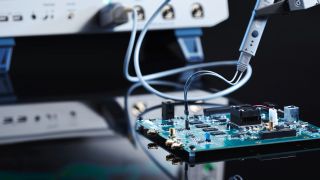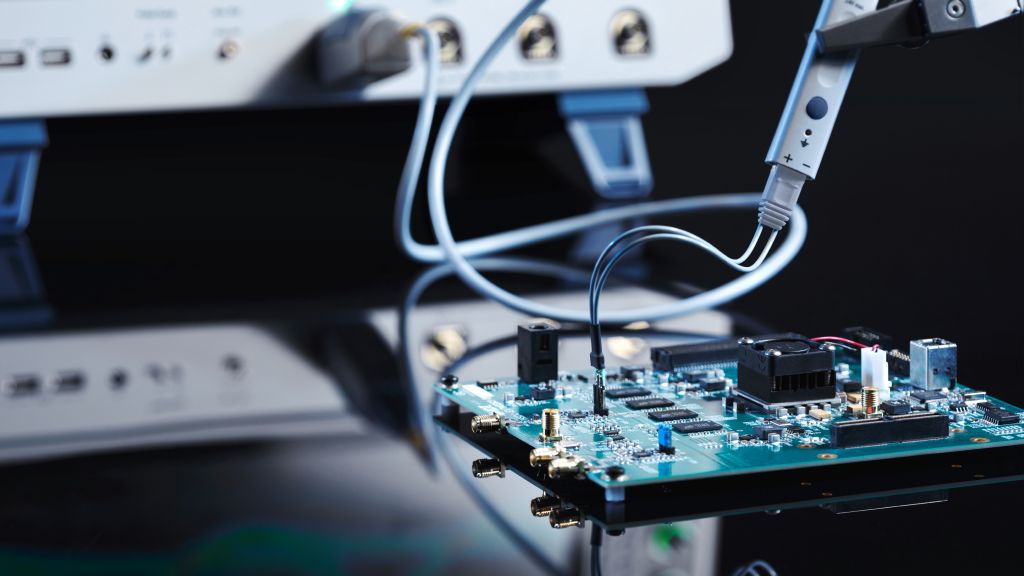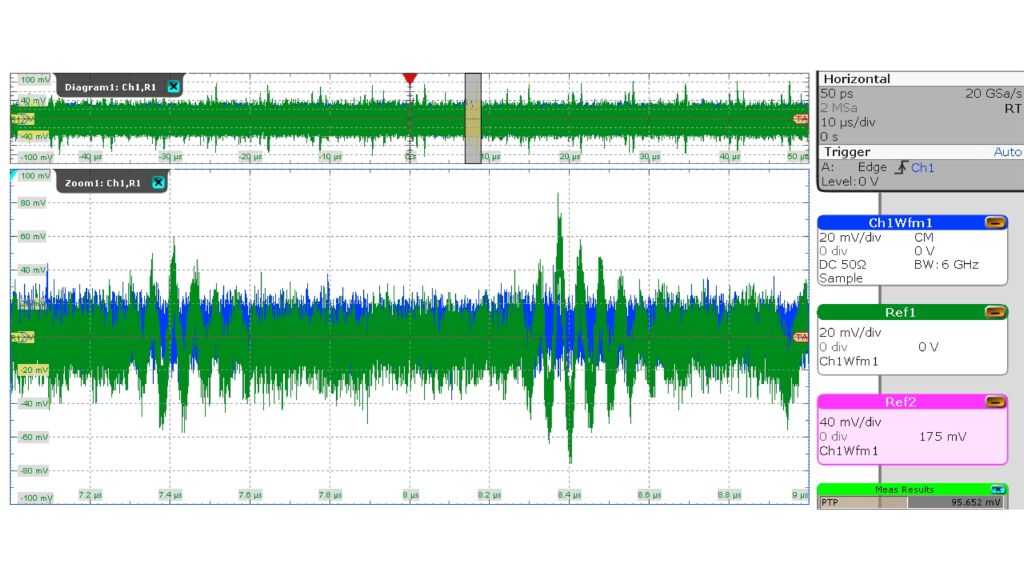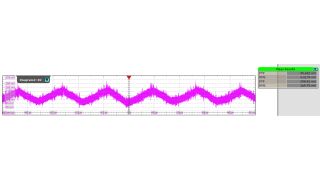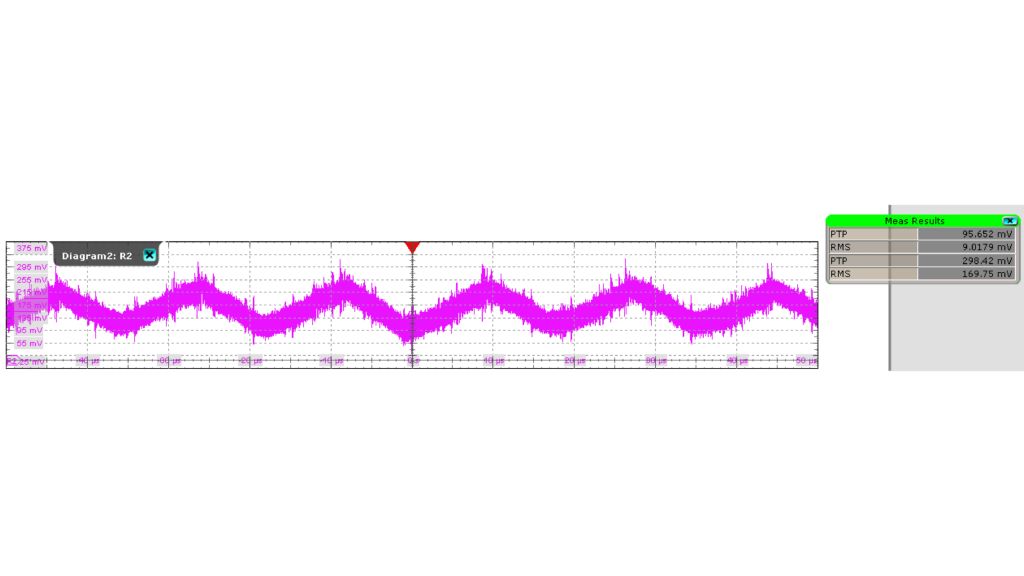The purple waveform in Fig. 3 is an example of the unpredictable and unknown influence if the ground of the probe is not connected. It represents the measurement without a ground connection (yellow waveform in Fig. 2) when the laptop is connected to the mains via the power supply. The purple waveform shows that now the switching frequency (approx. 55 kHz) of the power supply unit is also measured, which impacts the measurement result. The peakto- peak measurement of the CM triples to 298 mV (PTP value in the ‘Meas Results’ box).
When the ground of the probe is connected, the mains connection of the laptop has no impact on the measurement results. The results indicate that the probe ground connection also influences the differential voltage measurements. To compare the same data pattern of both measurements, a protocol trigger for a serial bus is used.
The blue waveform in Fig. 4 represents the measurement results with a ground-connected probe. The yellow waveform represents the measurement without a ground connection. The TIE jitter of the blue waveform is displayed in the green histogram at the bottom.
The RMS jitter of the setup with a ground connection corresponds to the standard deviation of the histogram σ = 10.8 ps (red arrow). Carrying out the same measurement on the yellow waveform results in an RMS jitter of σ = 14.5 ps, which is 34 % higher. This correlates to the overshoots of the yellow waveform seen in the zoom window. These results show the better signal fidelity of the measurements when using a probe with a ground connection.



